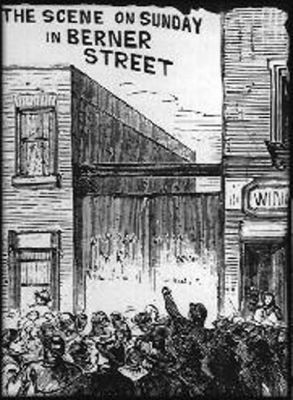Originally posted by Jon Guy
View Post
Realise that I am making some big assumptions here, but as I said, I always found it strange than the police didn't really make much or do much with Schwartz. Again, another assumption, I wonder if some evidence relating to his encounter has been lost or destroyed? Maybe the police tracked down either BS or pipe man and eliminated them from their enquiries. Some people have posited that BS man could have been Morris Eagle. Could their be something in that?
Tristan





Comment